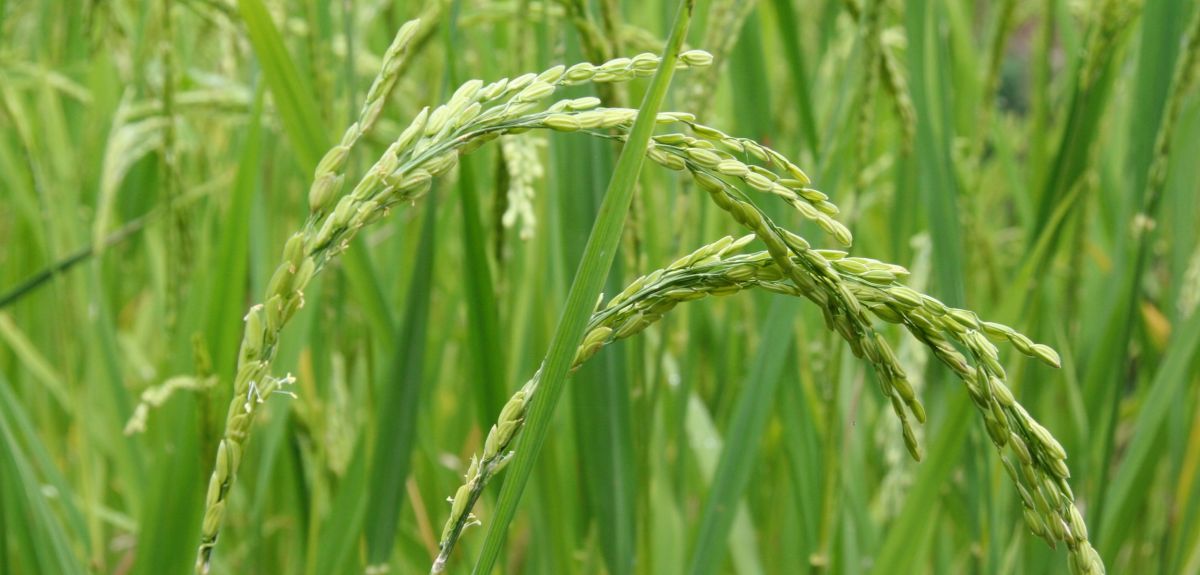
Rice to feed the world given a funding boost
Research led by Oxford University into revolutionising global rice production has been given a $15 million funding boost by the Bill & Melinda Gates Foundation.
The next phase of what is known as the C4 Rice Project has been given the green light for a further five years during which time scientists believe they will develop a prototype for a strain of rice which would give higher yields and endure harsher environmental conditions.
Put simply, it could help to feed a world which is already struggling to provide for its expanding population, particularly in South East Asia and Sub-Saharan Africa. Currently over 3 billion people in Asia depend on rice for survival, and, owing to predicted population increases and a general trend towards urbanisation, the same area of land that provided enough rice to feed 27 people in 2010 will need to support 43 by 2050.
Professor Jane Langdale, from the Department of Plant Sciences, University of Oxford, who leads the consortium, said: ‘This is an extremely challenging long-term project and we are grateful to the foundation for backing the team for a further five years. This new award will get us closer to delivering rice lines that will have real impact for smallholder farmers’.
Rice uses the C3 photosynthetic pathway, which in hot dry environments is much less efficient than the C4 pathway used in other plants such as maize and sorghum. The C4 Rice project aims to ‘switch’ rice to use C4 photosynthesis, with transformational potential.
The C4 photosynthetic pathway, which has evolved over 60 times independently, accounts for around a quarter of terrestrial primary productivity on the planet despite being used by only 3% of species. In most C4 plants, photosynthetic reactions happen in two types of cell arranged in ‘wreaths’ around closely spaced veins – an arrangement referred to as Kranz anatomy. One of the major challenges of the C4 Rice Project is to convert rice leaf anatomy to this form. Working out which genes need to be modified to achieve this switch will be a major focus of the team’s research over the next five years.
The most recent phase of the project has seen a leap in progress by harnessing a synthetic approach towards engineering the photosynthetic pathway. The highly promising direction of this research is confirmed in today’s announcement, and this funding boost now makes the C4 Rice project one of the longest running projects in the foundation’s agriculture portfolio.
Professor Julian Hibberd from the Department of Plant Sciences at the University of Cambridge, who is a member of the C4 consortium, said: ‘We are excited to be able to build on the significant progress to date, and move closer to our ultimate goal of generating a higher yielding rice’.
Professor Steve Long, who runs the Gates Foundation-funded RIPE Project from the University of Illinois, and was a Visiting Professor at Oxford’s Department of Plant Sciences, said: ‘This is wonderful news. The C4 rice team have made outstanding progress toward cracking the code as to how to make a C4 crop. This will bring the world one step closer to obtaining C4 rice, and to gaining extra productivity without needing more water or nitrogen.”
By the end of the next phase of research in 2024 scientists hope to have experimental field plots up and running in Taiwan.
The scale and reach of the project means that this is a trans-generational project.
Professor Langdale said: ‘This is about being custodians of something that’s bigger than our individual scientific interests’
A condition of Gates Foundation funding for the project is a Global Access Commitment to ensure that the knowledge and advancements made will be made available and accessible at an affordable price to people most in need in developing countries.
The C4 Rice Project consortium comprises the University of Oxford (lead), Academia Sinica, Australian National University, Max Planck Institute of Molecular Plant Physiology, Leibniz Institute of Biochemistry, University of Cambridge and Washington State University.
 International collaboration launches largest-ever therapeutics trial for patients hospitalised with dengue
International collaboration launches largest-ever therapeutics trial for patients hospitalised with dengue
 Oxford-built multi-agent assistant for cancer care to be piloted in collaboration with Microsoft
Oxford-built multi-agent assistant for cancer care to be piloted in collaboration with Microsoft
 World's first Phase II Nipah virus vaccine trial launch
World's first Phase II Nipah virus vaccine trial launch